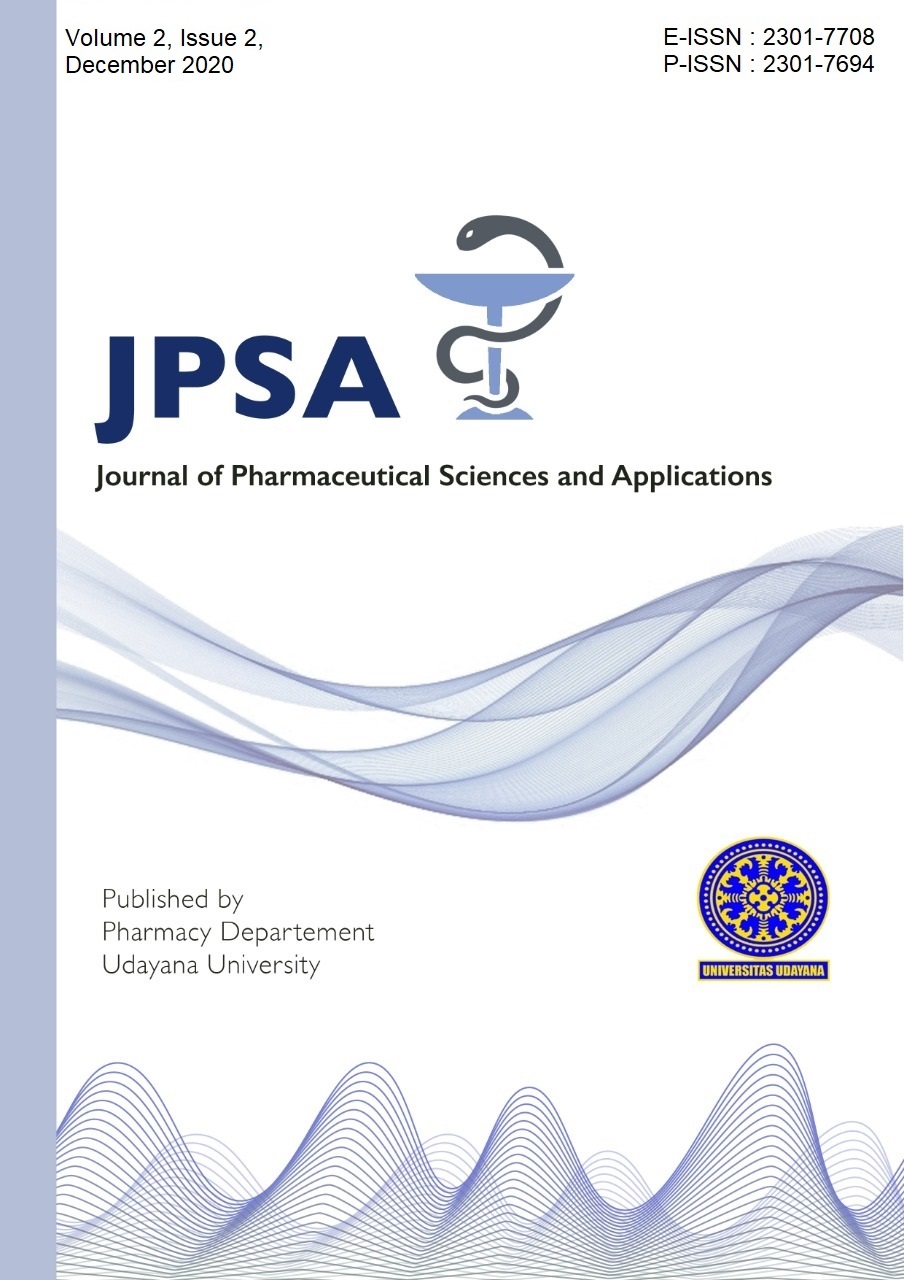REVIEW OF SOME TRADITIONAL HERBALS INCLUDED IN USADA TENUNG TANYA LARA AS DIARRHEA THERAPY AGENTS
Abstract
Background: Diarrhea is one of the most extraordinary diseases in the world, with a number of 2.195 children die every day, and 801.000 children die from diarrhea every year. Diarrhea therapy has actually been conducted by society, but the use of synthetic drugs is limited for diarrhea cases since it will trigger undesirable effects, such as abdominal pain and resistance to pathogenic bacteria. Bali, with its unique culture, has Usada Tenung Tanya Lara, which contains procedures for treating diarrhea using plants. Objective: This work aimed to review traditional medicine, which is written in Usada Tenung Tanya Lara, that has been intensified nowadays and can be an alternative in the treatment of diarrhea. Methods: This article review using a primary data source and secondary data sources. Result: Some of the plants that have been collected have anti-diarrheal activity in the usada Tenung Tanya Lara are turmeric (Curcuma longa), banana (Musa paradisiaca) and ancak (Ficus religiosa). These three plants mostly have anti-diarrheal activity by inhibiting and killing pathogenic bacteria that cause diarrhea, such as Shigella dysenteriae, Escherichia coli, and Vibrio cholerae. Aside from being antibacterial, all three plants also have several mechanisms to cure diarrhea. Conclusion: It was revealed that turmeric, banana, and ancak leaf could act as agents of diarrhea therapy with their respective mechanisms of actions.
Keywords: Diarrhea, Usada Tenung Tanya Lara, Curcuma longa, Musa paradisiaca, Ficus religiosa.
Downloads

This work is licensed under a Creative Commons Attribution 4.0 International License.
Authors who publish with this journal agree to the following terms:
Authors retain copyright and grant the journal right of first publication with the work simultaneously licensed under a Creative Commons Attribution License that allows others to share the work with an acknowledgment of the work's authorship and initial publication in this journal.
Authors are able to enter into separate, additional contractual arrangements for the non-exclusive distribution of the journal's published version of the work (e.g., post it to an institutional repository or publish it in a book), with an acknowledgment of its initial publication in this journal.
Authors are permitted and encouraged to post their work online (e.g., in institutional repositories or on their website) prior to and during the submission process, as it can lead to productive exchanges, as well as earlier and greater citation of published work. (See The Effect of Open Access).

This work is licensed under a Creative Commons Attribution 4.0 International License.


 HOME
HOME
















